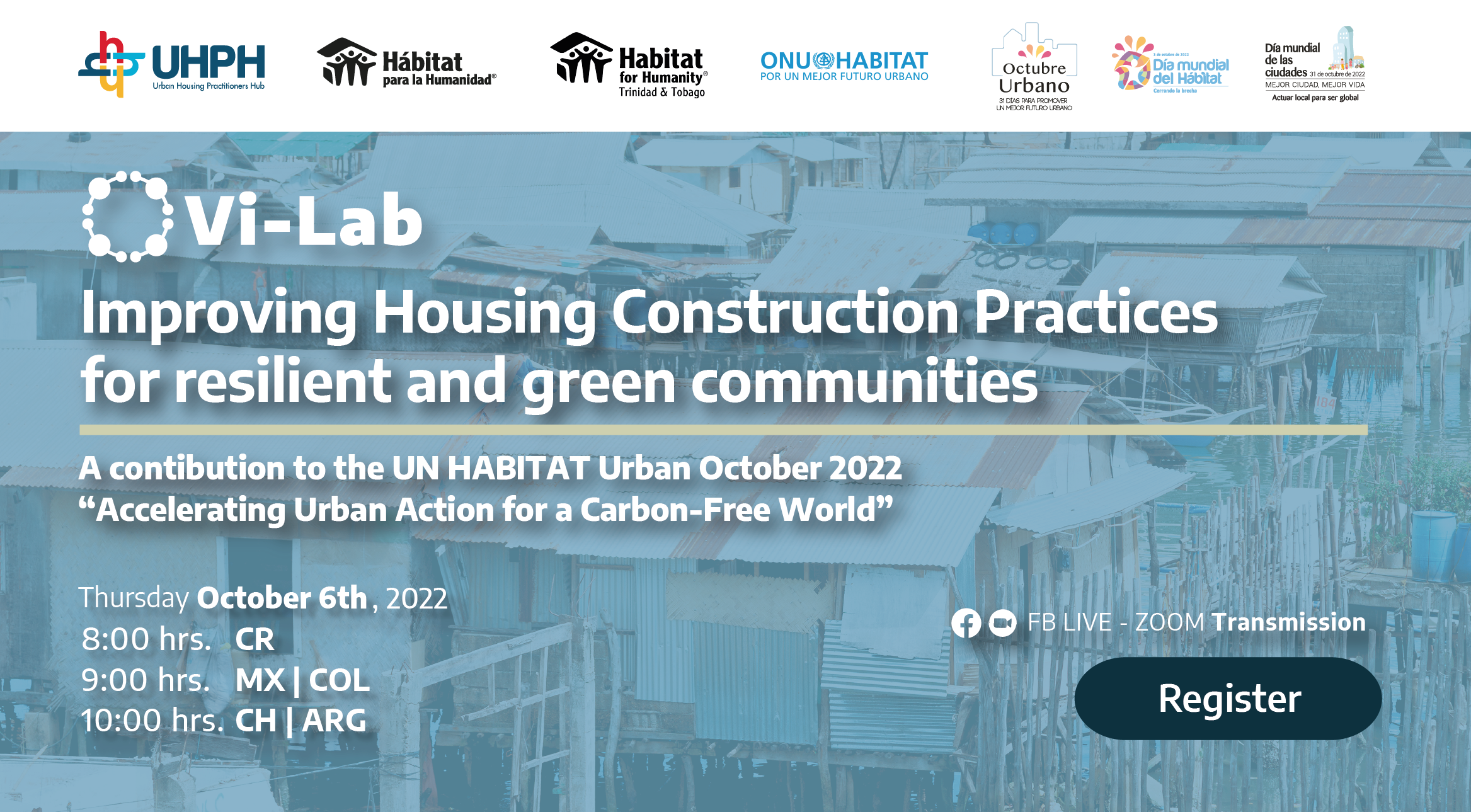SPEAKERS
General Presentation
- Ernesto Castro – Habitat for Humanity and the Urban Housing Practitioners Hub
- Jennifer Massiah – National Director of Habitat for Humanity in Trinidad and Tobago
Policy Examples
- Carina Lakovitz - Practice Manager for Urban Development and Disaster Risk Management - Latin America and the Caribbean region, World Bank
- Dr. Nicole Goodridge – Disaster Risk Management Specialist, Caribbean Disaster Emergency Management Agency
- Mia Amor Mottley - Barbados Prime Minister (Caricom representative) *TBC
- Penelope Beckles, Minister of Planning T&T
- Jennifer Doherty - Climate Change Specialist IDB
Disaster response and resilience buildings
- Louise Faulkes – Caribbean Programs and Engineering Manager, Build Change
- Mario Flores - Director, Field Operations - Disaster Risk Reduction and Response Habitat for Humanity International
New construction materials
- Bruno Lana, Cepal, Study for new housing materials
- Abel Castillo, Boblock-Dominican Republic
New technologies & construction systems
- Juan Sandoval Miyamoto Global Disaster Relief
Housing Alternatives
- Sebastian Bowen – Executive Director Déficit Cero
- Ana Cutts, Habitat for Humanity Argentina
Conclusions
- Elkin Velasquez - UN Habitat representative for LatinAmerica and the Caribbean *TBC
To join this year’s World Habitat Day “Accelerating Urban Action for a Carbon-Free World”, Habitat for Humanity partnered with its Trinidad and Tobago office and VK Architects and Engineers to host a Vi-Lab on housing risk, resilience and green transformation in Latin America and the Caribbean.
In recent years, Habitat for Humanity has warned about the increasing threat that climate change poses to global housing. Specifically, the organization has documented far-reaching impacts in seventy countries where they work. Hurricanes, droughts, tornadoes, floods, and wildfires are some salient examples of disasters in which families’ houses are severely damaged or destroyed.
Furthermore, according to the United Nations Environmental Program, buildings and their construction produce 40% of global energy-related greenhouse gas emissions (UNEP, 2020).
As such, there is a double challenge for:
(i) increasing resilience of current and future housing
(ii) incentivizing sustainable practices to reduce housing’s greenhouse emissions (both in their construction and living phases).
Habitat for Humanity believes that building stronger, more disaster-resilient and more energy-efficient housing, can both secure adequate, safe, and resilient shelter and contribute to both the immediate security and long-term well-being of families while reducing a home’s environmental impact. Moreover, adequate, affordable, and sustainable housing will contribute to the achievement of the Sustainable Development Goals.
Therefore, Habitat for Humanity is committed to strengthening housing technical expertise in existing and emergent approaches, tools and processes that allow it to pursue climate change adaptation and mitigation strategies. Encompassed in this objective are homebuilding and renovation efforts, disaster preparedness and resilience, disaster response and recovery, volunteer engagement, community education, advocacy, and development of more responsive housing markets.
This Vi-Lab pretends to help Governments, Architects, Engineers, and Housing builders in learning to build and renovate homes with this in mind, increasing the use of sustainable natural resources and construction practices while reducing the emission of greenhouse gasses throughout a home’s life cycle.
REGISTER
Learn about these processes, experiences, public policies and more in the next virtual event.
